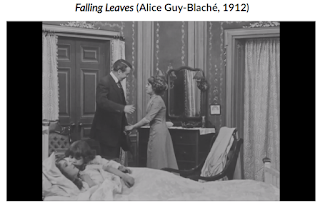Edited by Ida Daroza on Feb 13 at 6:37pm
Responses to my essay:
Hi Ida~ This is a loving shot! In addition to the name and relationship, we can also get from the intertitles what will happen next or what the characters plan to do. I agree that we can better understand the psychology of the characters compared to the earlier fiction film. Through the process of constructing the shots, we see that Trixie really loves her sister and hopes to save her. Also, from the beginning, Trixie's mother was restless and painful after knowing that her daughter was sick, and finally because of the excitement after seeing Dr. Headley's card. We can understand that the importance of the card to what will happen next. Just a shot, you can see a big change in the role.- Wilson Yuen
Hi Ida! I enjoy the points you make about the scene you chose. I liked how you addressed the psychological meaning of film characters. Kevin Rojas
My post to another student:
Hi Ariel,
Great analysis on the color techniques to help with the time of day in the film. I was impressed by the blue shading when they put Trixie to sleep. It seemed like they had turned off a light switch.
I'm not too clear on the difference between color tinting and color toning but I believe this is the color tinging technique since dark images remained black.
It was impressive that they were able to get the little girl to act so well and show emotion. I liked when she covered her eyes as to not see her sister get the shot.
The Quiz: I got 5 points
Your Answers:
What Danish film producer formed the production company Nordisk in 1906?
Ole Olsen
Please identify the character in the background from the shot from Falling Leaves below. How does this man help the Thompson family?
Dr. Headley is the family doctor a bacteriologist and he brings a shot to cure Winifred of consumption.
What object is this shot from Falling Leaves a close-up of?
Dr. Headley's business card
What type of editing breaks down a single space into separate areas? One simple way of doing this is to cut in closer to the action. Thus a long shot shows the entire space, and a closer one enlarges small objects or facial expressions.
Analytical editing
What company, headed by Thomas Edison and American Mutoscope & Biograph (AM&B), hoped to control all three phases of the industry: production, distribution, and exhibition in the early decades of the 20th century?
The Motion Picture Patent Company




No comments:
Post a Comment